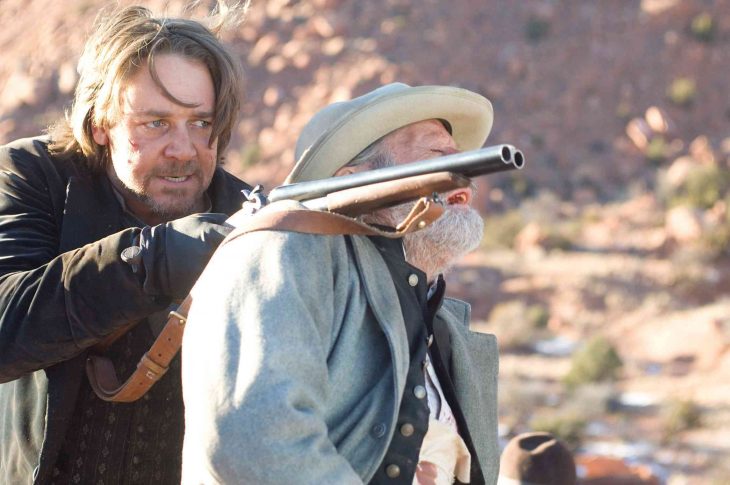
Three-Ten to Yuma and the Art of the Short Story
Three-Ten to Yuma, written by Elmore Leonard in 1953, was adapted for the screen as recently as 2007. Directed by James Mangold and starring well-known actors Russell Crowe and Christian Bale, the film, 3:10 to Yuma, is a rather non-traditional or modernized Western as the protagonist, Dan Evans (played by Christian Bale), is killed in front of his own son at the end of the movie. Ben Wade, the antagonist excellently portrayed by Russell Crowe, then kills his gang which is responsible for killing Dan, and he chooses to ride the train to Yuma prison in honor of Dan’s efforts. There is a moment, though, when Dan’s son holds his gun to Ben Wade, and he decides not to shoot him; the modernization of the story is held in this ending. Regardless of the kind of Western 3:10 to Yuma unfolds as, there is little doubt that the story is a Western, and I have never enjoyed Westerns. The film directed by Mangold is no exception. However, I thoroughly enjoyed reading the short story written by Elmore Leonard, and I know why.
Short stories as an art form have been considered by many to be dying or becoming irrelevant as of late. Ranging from a thousand to ten-thousand words (Three Ten to Yuma contains just over five-thousand words), short stories are generally quick reads that are published in either magazines or short story collections. In a world that is only becoming more digitally dependent and immersed, the question arises – where is the place for short stories in our society?
Now, Elmore Leonard’s short story was written in 1953 and published in a magazine. In fact, obtaining a paper copy of the short story today involves buying a printing of Three-Ten to Yuma and Other Stories, a 2006 collection of 6 other stories by Leonard published with it. That said, it is difficult to argue that Leonard’s story is anything inherently remarkable, especially as the movie adaptations (there was an earlier adaptation from 1957 directed by Delmer Daves I have not seen) both have to add much more story, seeing as the original short story is more of a singular scene that serves as the climax of the story.
And while Three-Ten to Yuma is a great read, it is not the story itself that I find attractive in the original text, but rather the medium through which the story is told. If the short story had been stretched out to, say, a film that lasted two hours, I would not have enjoyed it. As I have already said – despite Russel Crowe’s great portrayal of Ben Wade – the movie is good, but the genre is not one I find entertaining. If Leonard had decided to write a full-length novel, God forbid, I doubt I would have enjoyed it either as nothing is exceptional about his writing.
The short story, though, was just a taste of what a Western was, and I could enjoy the genre as it was accessible and not a large commitment. In the twenty-first century, people’s attention spans have shrunk considerably – even I tried distracting myself from writing this blog post several times by picking up my smartphone. The short story, however, is an ever-relevant art medium as it allows people to appreciate stories and styles that otherwise they may never appreciate.